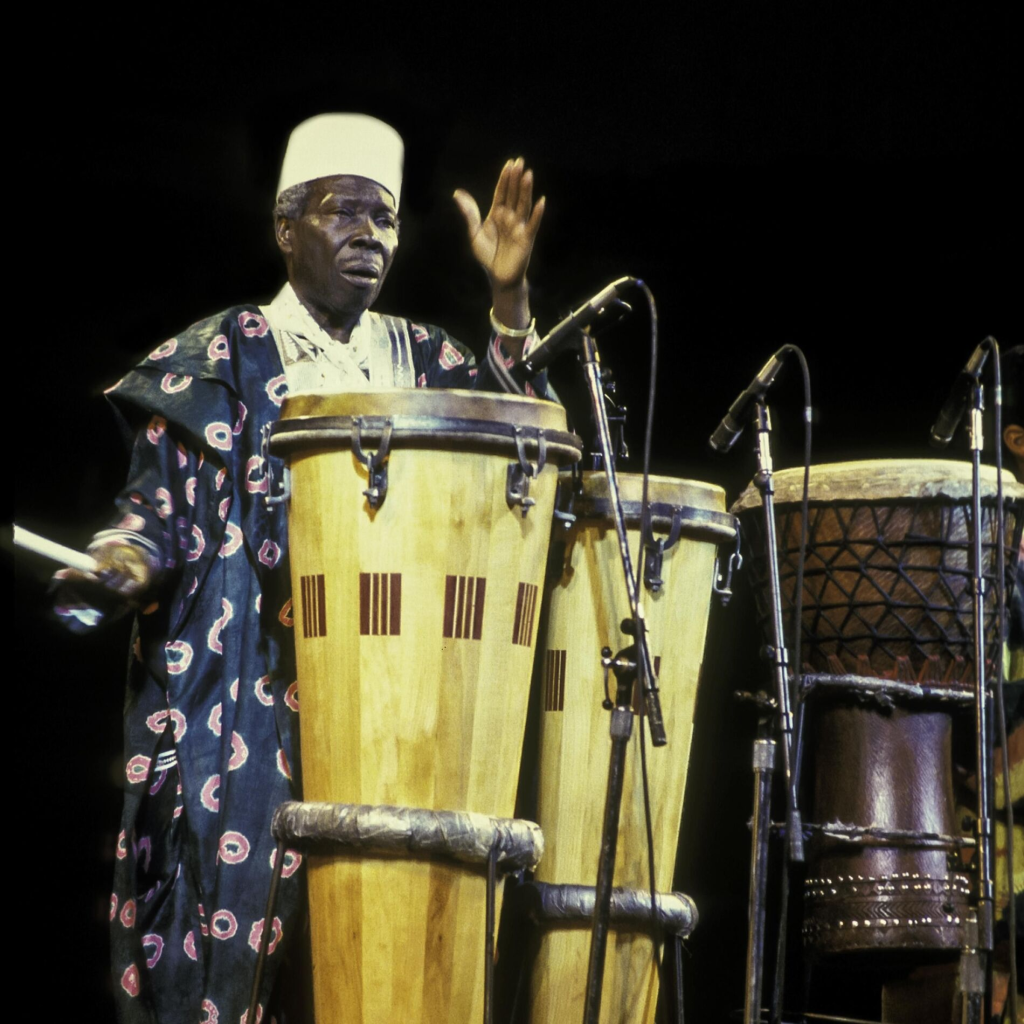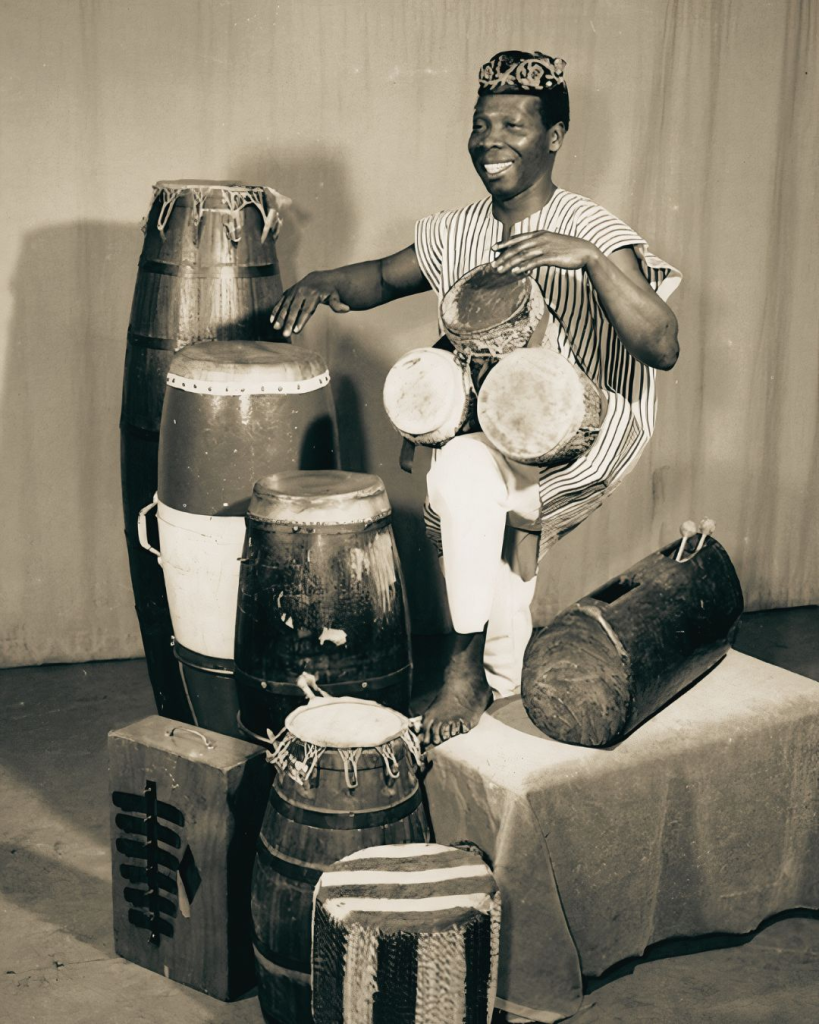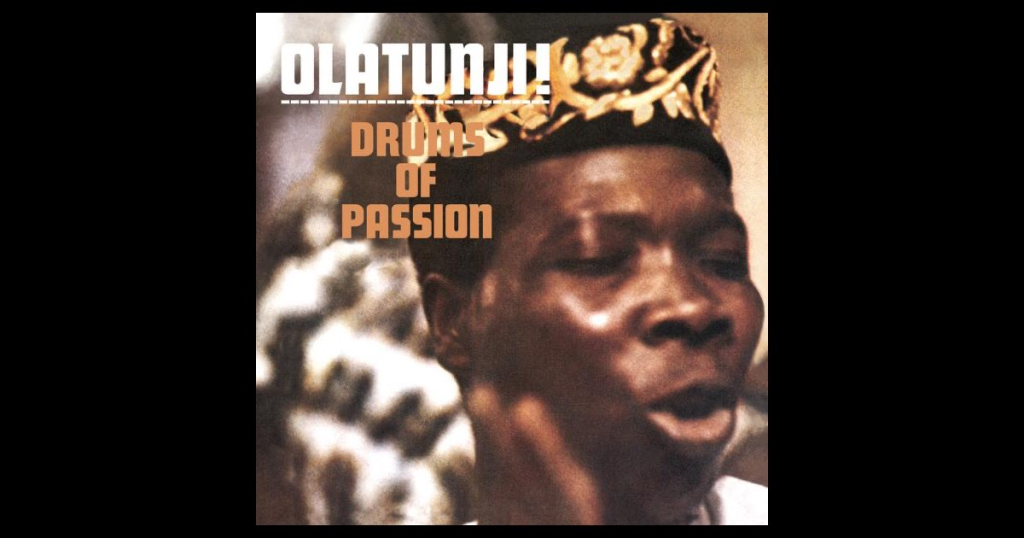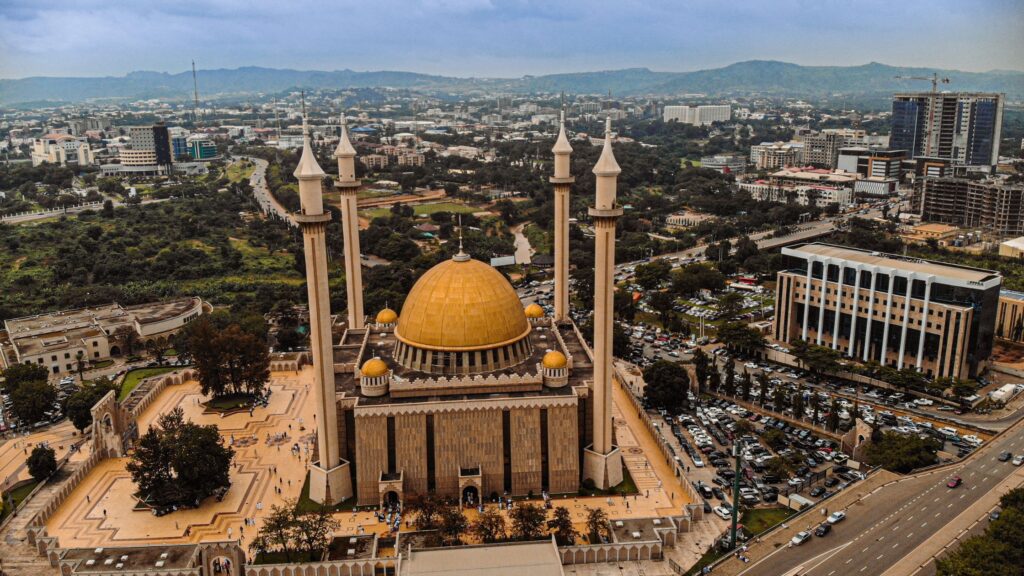Born in 1927 in Ajido, a fishing and trading village near Lagos steeped in Yoruba culture, Babatunde Olatunji arrived in the United States in 1950 with dreams of becoming a diplomat. A Rotary scholarship had brought him to Morehouse College in Atlanta, where he planned to study public administration.
But fate had other plans for this young Nigerian, who would become what Eric Charry described as not just representing Africa, but actually being Africa for an entire generation of Americans.

Coming to America, Meeting Segregation and Sparking African Pride
Babatunde Olatunji was being groomed to become a chieftain following his father’s death. But at the age of 12 he discovered that he had no interest in becoming a chief. One day, he read in the Reader’s Digest Magazine about the Rotary International Foundation’s scholarship program. He applied for the scholarship and was admitted in 1950 to attend Morehouse College in Atlanta, Georgia.
At Morehouse, he encountered the harsh realities of American racism alongside the profound ignorance about African culture. His response was both simple and transformative: he began sharing the rich musical traditions of his homeland. “Baba sparked a deep sense of pride among African Americans by strongly promoting images of African culture, which in a subtle but significant way, helped set in motion the currents of the early civil rights movement,” recalls Robert Atkinson, who collaborated with Olatunji on his autobiography.
The young drummer started performing at university social gatherings and giving drumming demonstrations at both black and white churches across Atlanta. His powerful performances, complete with traditional African robes and hand-hewn goat-hide drums, challenged every stereotype about African culture that Americans held. As Olatunji himself reflected, “Rhythm is the soul of life. The whole universe revolves in rhythm. Everything and every human action revolves in rhythm.”
Before Rosa Parks, there Was Babatunde Olatunji
Three years before Rosa Parks would spark the Montgomery Bus Boycott, Babatunde Olatunji was already staging his own creative protests against racial segregation. In 1952, he organized a brilliant demonstration that exposed the arbitrary nature of Jim Crow laws. He and a group of fellow students would board racially segregated buses in Atlanta wearing traditional African clothes, and were allowed to sit anywhere because they weren’t immediately identified as African Americans. The next day, they would board the same bus in Western clothing and refuse to move to the back when ordered by the bus driver.
“We started the protest quietly,” Olatunji later recalled. “We were part and parcel of the struggle for freedom in the early 1950s.” These acts of defiance continued despite the constant threat of imprisonment, demonstrating his early commitment to challenging systemic racism through direct action.
Drums of Passion: The Album that Introduced Africa to the World
In 1959, Olatunji released Drums of Passion, the first album of African drumming recorded in stereo in an American studio. The album was revolutionary, introducing a mass audience to the power and intricacy of African music with vivid sound and exotic song titles like Primitive Fire.
Mickey Hart of the Grateful Dead, who would later become Olatunji’s collaborator, remembered the profound impact: “From the moment I heard it in 1959, I’ve been chasing that feeling for 40 years. ‘Drums of Passion’ combined drums, vocals and then brass — the hot syncopation of New York City.”
But Drums of Passion was more than just a musical breakthrough; it was a cultural catalyst. As Olatunji himself understood, “Drums of Passion played a significant role in all the social change taking place around that time. It was the first percussion album to be recognized as an African contribution to the music of African Americans… This meant we were recognized as pioneers in the ‘Black is Beautiful’ movement. The whole idea of ‘black power’ came along at that time. And so did the wearing of the dashiki and the natural hair.”

Bridging Two Movements
Babatunde Olatunji’s civil rights activism was deeply connected to the wave of anti-colonial resistance sweeping across Africa in the 1950s and 1960s. In 1958, he travelled to Accra to attend the All African People’s Conference organized by Ghana’s independence leader Kwame Nkrumah. This gathering brought together leading independence figures from 28 African countries to strategize their opposition to European colonization.
The intellectual exchange between Africans and African Americans during this period was profound. When Martin Luther King Jr. visited Ghana’s independence celebrations in 1957 and met Nkrumah, he returned with insights that would shape his approach to civil rights. “Ghana has something to say to us,” King declared. “It says to us… that the oppressor never voluntarily gives freedom to the oppressed. You have to work for it.”
Olatunji became a bridge between these two streams of liberation. His widow, Iyafin Ammiebelle Olatunji, explained that “He saw himself as a pan-Africanist who always reached out to unify Africans and African Americans.” This role brought him into close contact with both Martin Luther King Jr. and Malcolm X, though their approaches to civil rights differed significantly.
The Rhythm of Resistance
“He had a close relationship with both Martin Luther King and Malcolm X,” Robert Atkinson notes. “Baba was a bridge between the two approaches of the time: King’s was non-violent and Malcolm’s not so much sometimes.” Babatunde Olatunji performed at civil rights rallies for both leaders, his drums providing the soundtrack to the struggle for freedom.
His performances for the NAACP and King’s Southern Christian Leadership Conference were legendary. In 1960, he appeared on the ground-breaking civil rights jazz album “We Insist!” alongside playwright Oscar Brown Jr. and drummer Max Roach. His daughter Folasade remembers “The intensity of my father’s performances, during which he exuberated his passion for his art, his message, and his fans always amazed me.”

Bringing African Influences to Jazz
Babatunde Olatunji’s influence extended deep into the jazz world, where he helped pioneer what would become known as Afro-jazz. “We were playing ‘Afro-jazz’ before anybody called it that,” he recalled. His relationship with John Coltrane was particularly significant. The legendary saxophonist became, in Olatunji’s words, “my number one fan and didn’t hide it.”
Coltrane told Olatunji: “I really admire what you’ve been doing. Every chance I get, I come to see and hear you. And when I do, I listen close to every move you make, everything you play. So one day I want to come a little nearer and learn something from you.” In 1962, Coltrane recorded Tunji in Babatunde Olatunji’s honour, marking what the drummer saw as the beginning of bringing African forms into jazz.
Legacy of Liberation
Olatunji’s impact on American culture extended far beyond music. In the late 1960s, he founded the Center for African Culture in Harlem, where he taught drummers and other artists seeking to add African elements to their work. His influence can be seen in the dashikis and natural hairstyles that became symbols of Black pride, and in the countless musicians who incorporated African rhythms into their sound.
When Babatunde Olatunji died in 2003, one day before his 76th birthday, he left behind a legacy that continues to inspire. Opal Tometi, co-founder of the Black Lives Matter movement, acknowledges this connection: “The leaders in the 50s and 60s provide me with a great deal of inspiration… We have picked up the baton from a previous generation and we’re continuing to run the race that they started.”

Babatunde Olatunji’s story reminds us that the civil rights movement was never just an American phenomenon. It was part of a global struggle for human dignity and freedom, with African voices like his providing both the rhythm and the reason for the fight. His drums didn’t just make music; they made history and a rhythm that still resonates in movements for justice today.
As his biographer Robert Atkinson observed: “This is a perfect time for people to know about Baba. These demonstrations for justice are such a new and greater uprising of what he was part of 60 years ago.” In every protest song, every rhythm of resistance, every beat for justice, the spirit of Babatunde Olatunji lives on.












